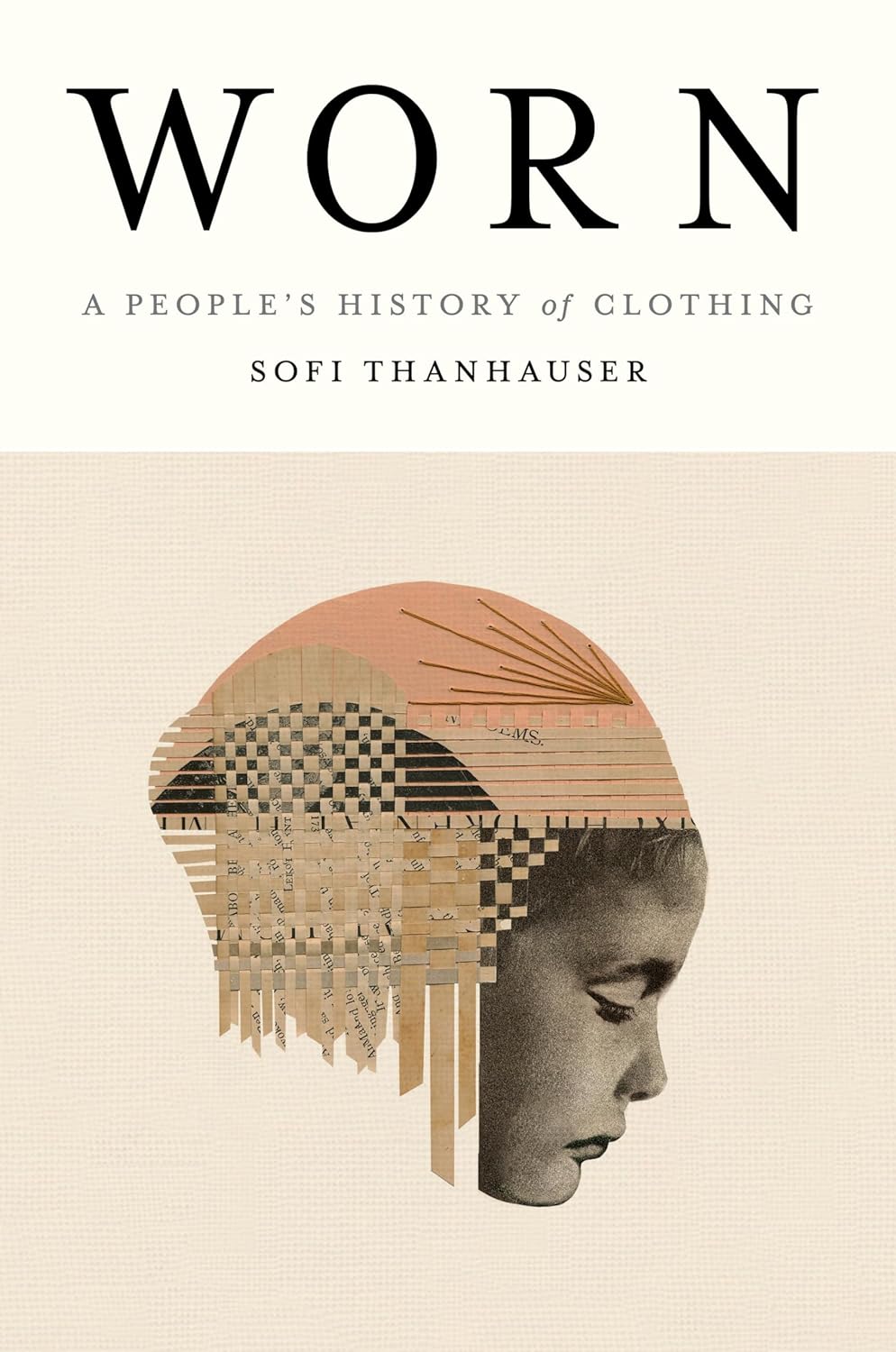Sofi Thanhauser is a writer, artist, and musician based in Brooklyn. She is the author of Worn: A People’s History of Clothing (Pantheon, 2022) and has received fellowships from Fulbright, MacDowell, Ucross, and Millay Arts, among others. Her work has appeared in Vox, The Guardian, Observer Magazine, Dame, and Literary Hub, among others. Her second book, Shelter, is forthcoming from Riverhead.

-
Worn: A People’s History of Clothing
Today, it is no longer cheaper to make your own clothes than to buy them. A task that once fell within the province of the ordinary household is now an esoteric hobby, requiring skills out of reach to most ordinary Americans. It can even be cost prohibitive, since to buy the cloth to make a shirt will often cost more than the price of a new shirt. A curious reversal.
Ralph Tharpe, the former design engineer at Cone Mills in North Carolina, and the man responsible for making denim for Levi’s 501s during the 1970s, put the question to me this way: “Why is it that from 1960 to today the price of a Ford truck has increased ten times over and the price of a pair of dungarees has stayed the same?” This question becomes even more puzzling when one considers that many mass-manufacturing processes have been automated since the 1960s but sewing is not one of them. The process one follows to sew a garment has not changed materially since the advent of the sewing machine. Fabric is a fussy and unpredictable material, unlike sheet metal, that still requires the subtle manipulation of tension that can only be done by a real human hand.
How then, did this happen? Worn: A People's History of Clothing
Worn: A People's History of Clothing- Print Books
- Bookshop
-
Worn: A People’s History of Clothing
If there was no rain, and the level continued to drop, they would not be able to plant at all. And what would they do then? Then they would have to take out a loan, Selvi said, and wait for the next year. With nothing growing on their own field they would hire themselves out to work.
Under normal circumstances, Selvi’s husband would have brought the cotton to auction, but he was dead and her parents were too old. She started to cry softly. I could not bring myself to ask whether he was one of the thousands of cotton farmers who had committed suicide because of crushing debt.
Ironically, the suicide method of choice for many cotton farmers in India is by ingesting the chemical defoliant paraquat. “In early reports, accidental poisoning from drinking the dark brown concentrate, which resembles a cola drink after it has been decanted into soft drink bottles, was common,” stated a laconic report released by a group of Indian doctors in 2009. “Recently, however, intentional suicidal deaths predominate.” Worn: A People's History of Clothing
Worn: A People's History of Clothing- Print Books
- Bookshop
-
Worn: A People’s History of Clothing
Inside the factory, heat and moisture permeated the air. The cocoons passed through pipes where progressive stages of hot and even hotter water broke up the glue that held the long strands of silk together in a tightly wrapped cocoon. Silk is extruded in a continuous filament by silkworms, which wrap themselves up inside it to undergo metamorphosis.
In a large adjoining room were rows of reeling machines, which mechanically unwind the thread from a cocoon of silk and wind it onto a bobbin, with one young woman minding every eight. One of the workers looked up at me and smiled, and I felt that instant shame I feel whenever I go into a factory and watch women work. Phone in the front pocket of her puffer vest, leggings, ponytail, she passed back and forth along the channel of water that ran beneath the machines. Hundreds of cocoons bobbed in the water, shaking as the thread unwound off of them and into the spools above. The young woman stopped occasionally to catch a thread from the water and pull it up through a white ring, into a blue spool, then a red one, tying a knot between this filament and another. It was an odd thing to watch: like the performance of a deft mime, because the filament was so fine it was invisible to the naked eye.
Well, to my eye. Mr. Bo said these women, who mostly came from north of the Yangtze, were all under twenty-five, and had very good eyesight. Worn: A People's History of Clothing
Worn: A People's History of Clothing- Print Books
- Bookshop
“We learn that, if we were a bit more curious about our clothes, they would offer us rich, interesting and often surprising insights into human history. . . . [A] deep and sustained inquiry into the origins of what we wear, and what we have worn for the past 500 years." —The Washington Post [on Worn: A People's History of Clothing]
“This expansive history documents the transformation of clothing manufacture from a handmade practice, rich with personal significance, to a mass-production industry . . . elegantly chronicling how textile production came to be defined by worker exploitation, misogyny, environmental devastation, and colonialism.” —The New Yorker, "Briefly Noted" [on Worn: A People's History of Clothing]
“Thanhauser’s approach to exposing a system gone so horribly wrong is to synthesise the existing literature, add fresh insights drawn from her own fieldwork, and deliver the findings in a richly evocative narrative powered, but never overwhelmed, by a sense of righteous anger. . . . None of this is logistically or morally simple, and the great virtue of Thanhauser’s analysis is how alive she is to the difficulty of making these networks legible.” —The Guardian [on Worn: A People's History of Clothing]
How thrilling to encounter this uniquely elegant intelligence. Sofi Thanhauser’s curiosity is a gift to the reader; her sentences are as layered as her investigations, which look with a devoted intensity at the objects around us that might otherwise escape our attention. This includes the very fabric of the clothes we wear: how it is grown and sewn, by whom and at what cost, and how those threads twine our history with the planet’s future. Argument, memoir, and reportage grow in scope and import, becoming symphonic.